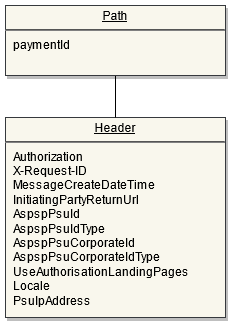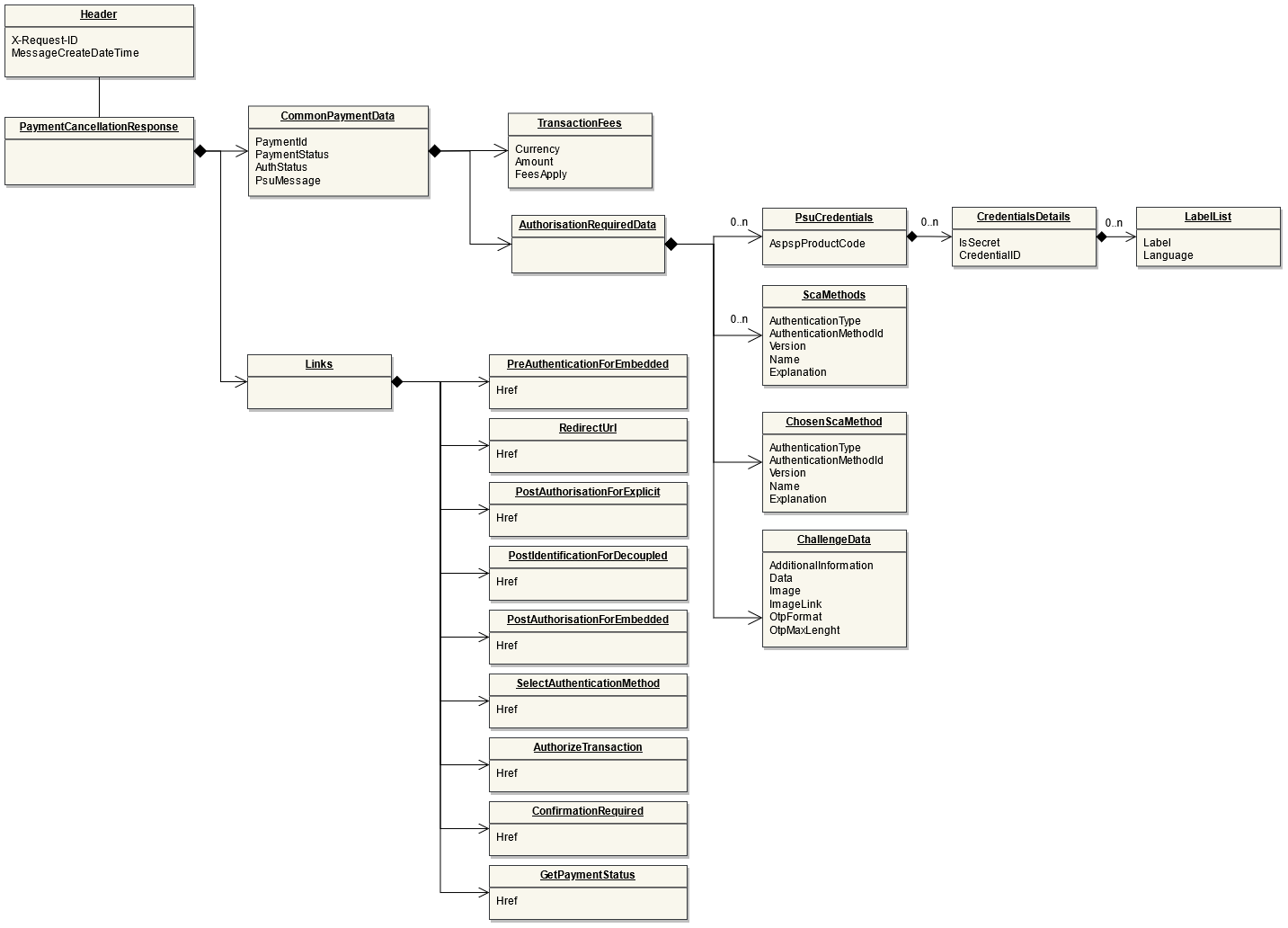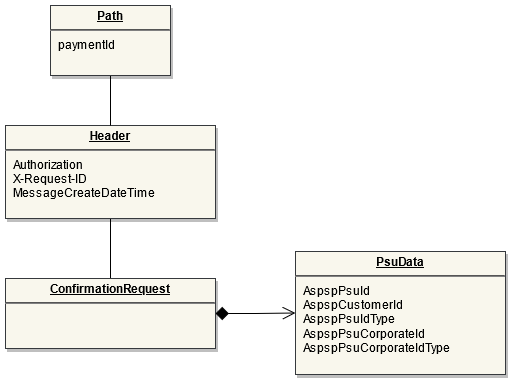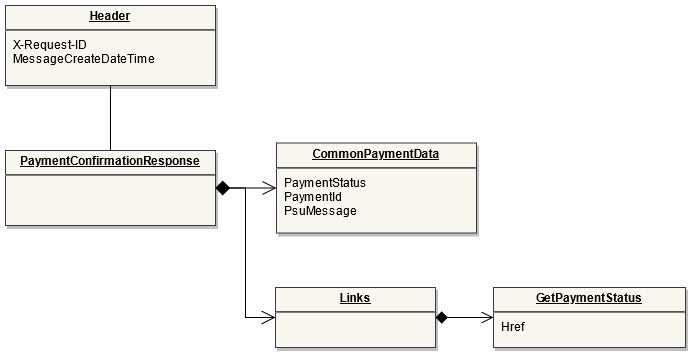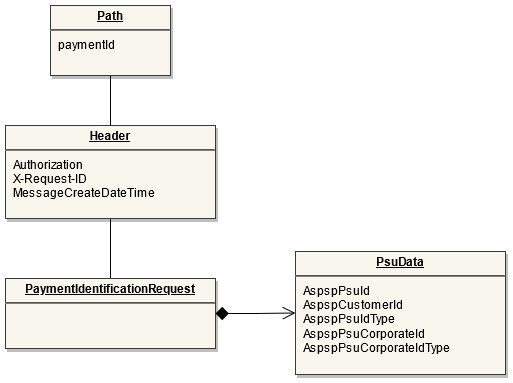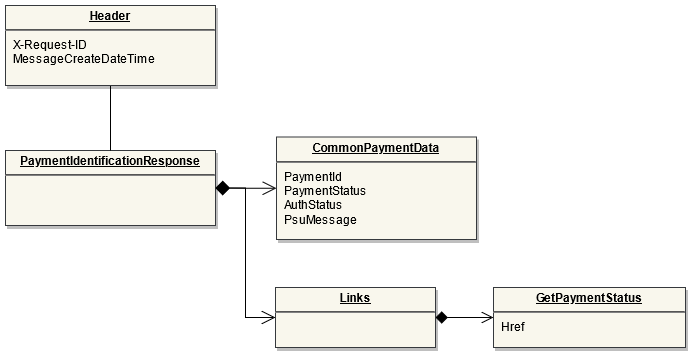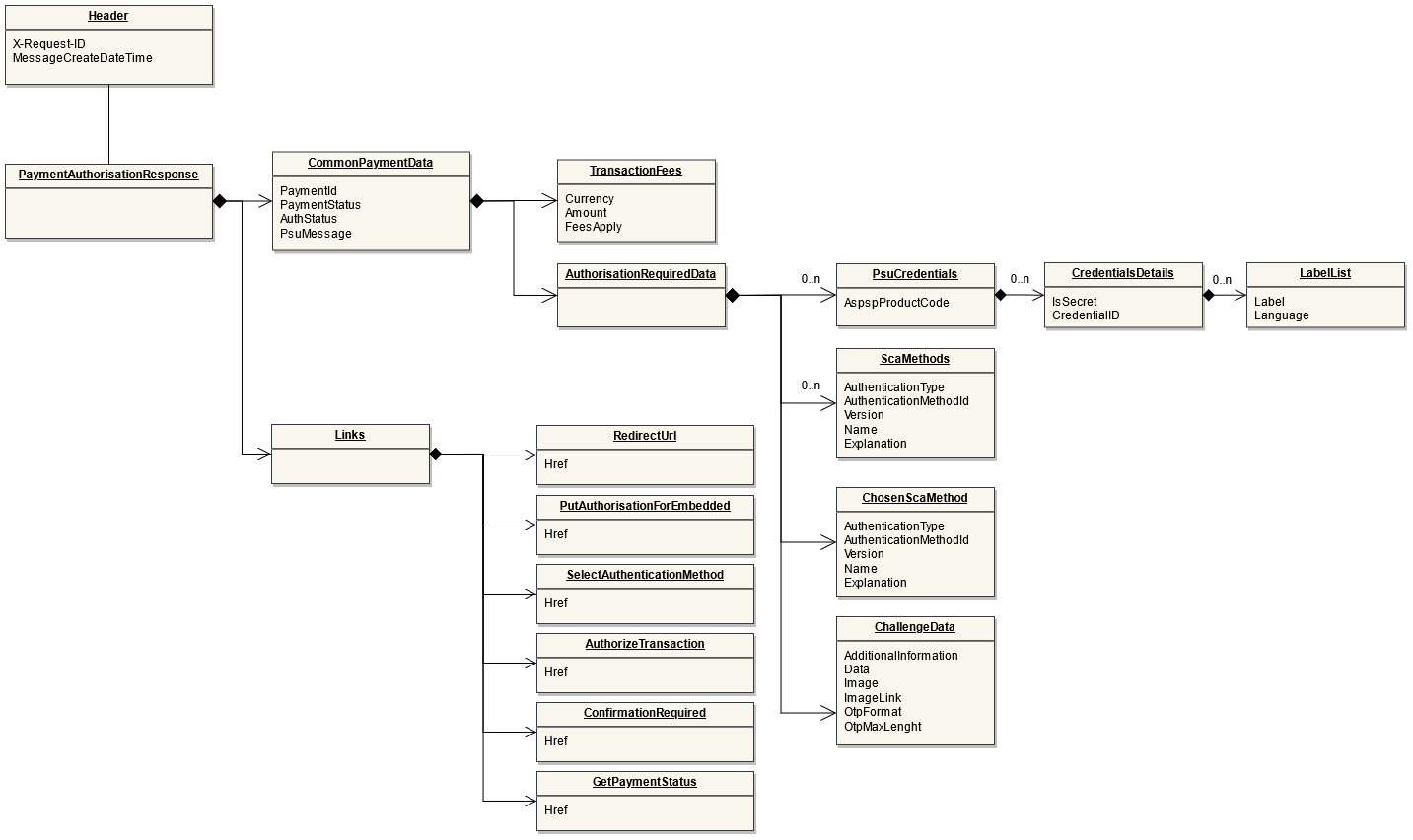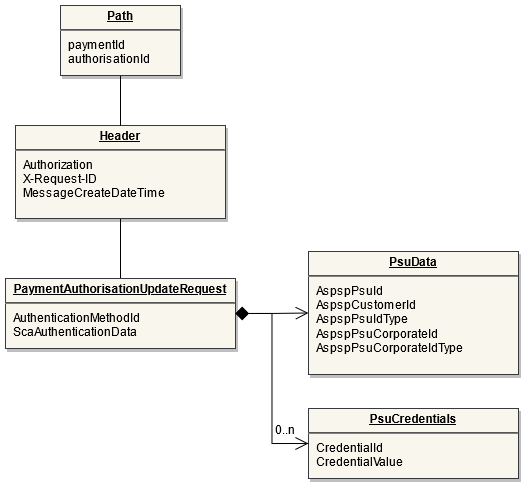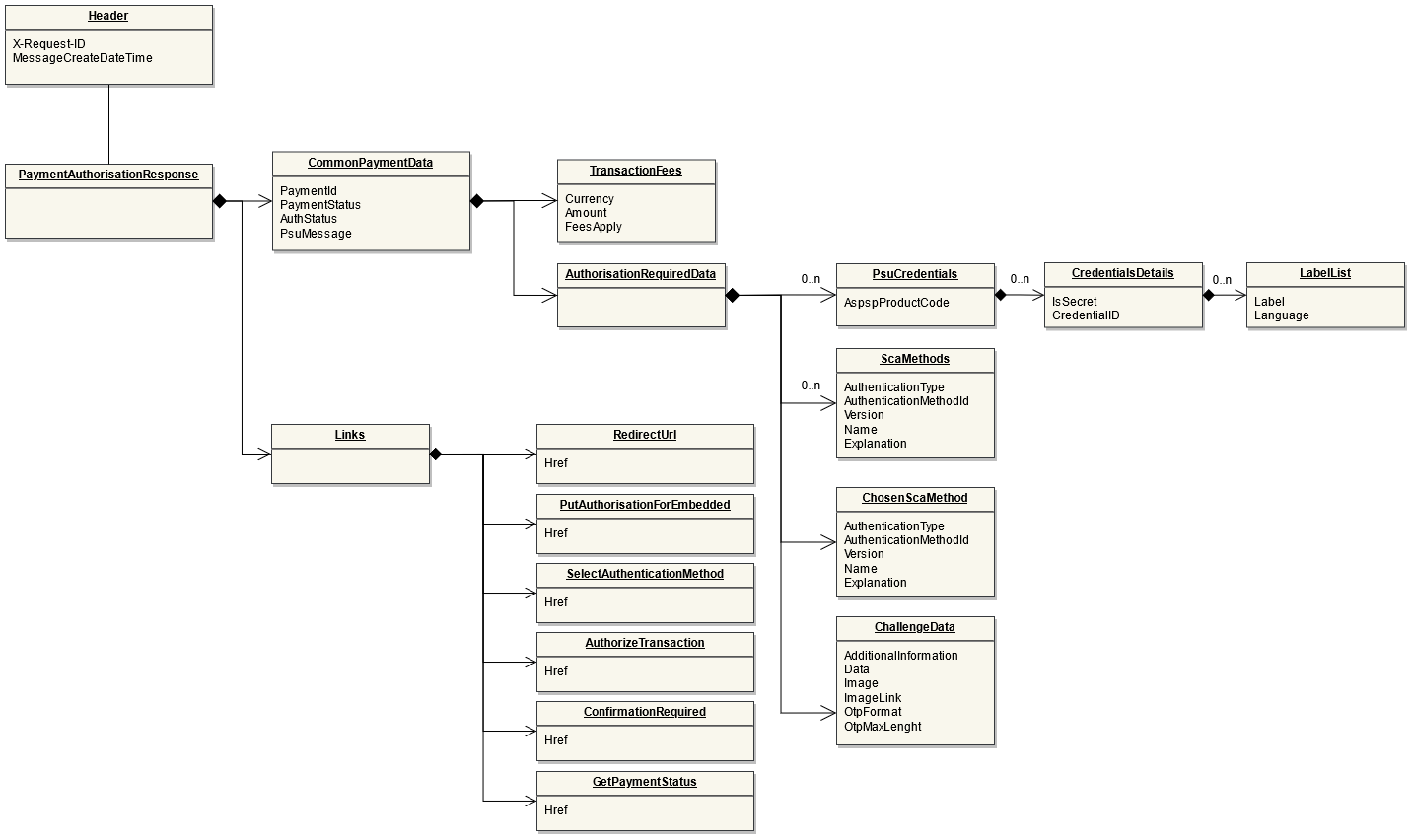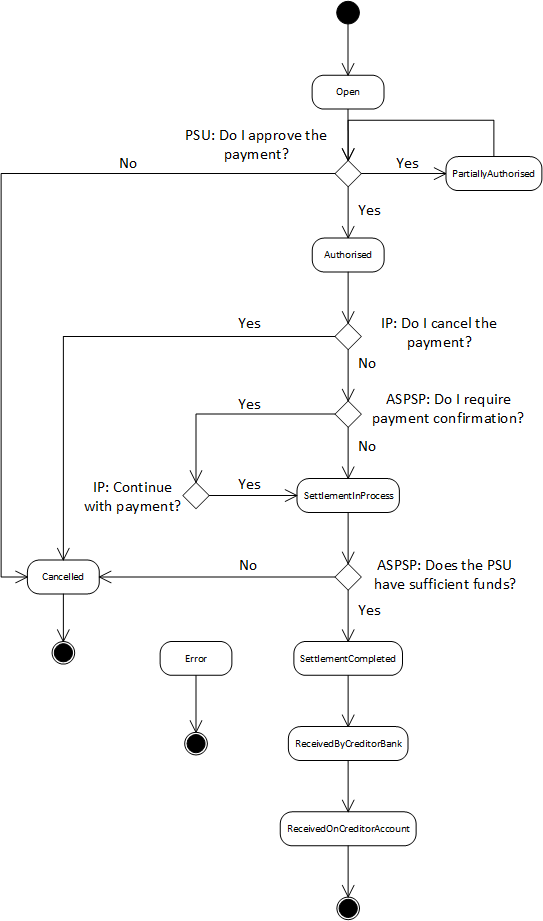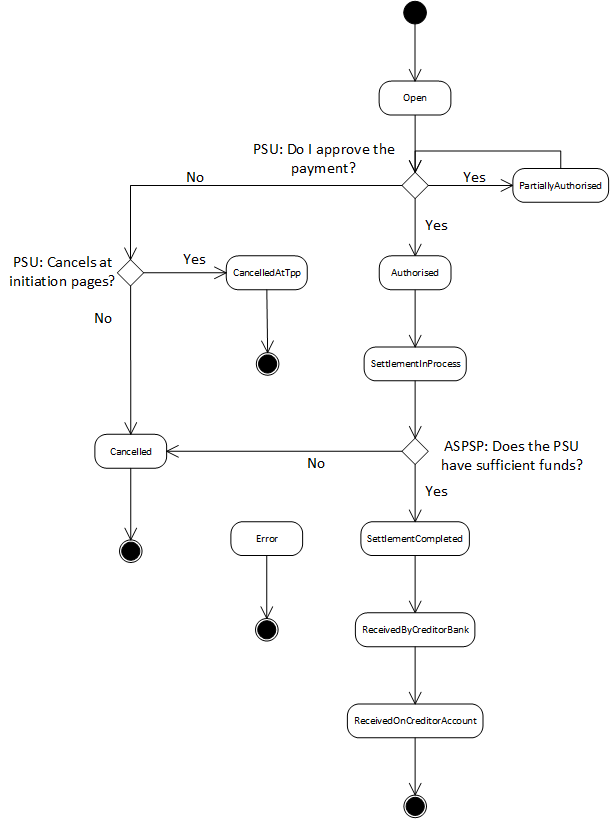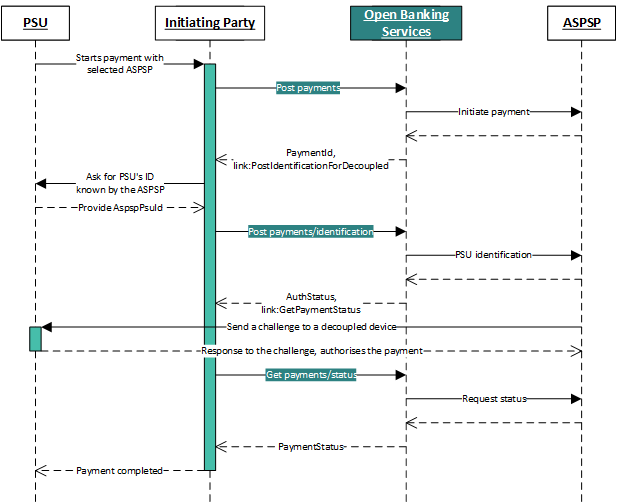ob-p-a2a-cancellation
These endpoints are used to cancel a payment on behalf of the Payment Service User. Strong Customer Authentication might be required by the ASPSP, the response will indicate which step is required to complete the payment.
DELETE Payments
Endpoint: DELETE /payments/{paymentId}
Endpoint: DELETE /periodic-payments/{paymentId}
Endpoint: DELETE /scheduled-payments/{paymentId}
Endpoint: DELETE /bulk-payments/{paymentId}
Data model
POST Cancellation-Identification
Endpoint: POST /payments/{paymentId}/cancellation-identification
This API is used to start an authorization process explicitly in the Decoupled Approach, where the PSU identification isn’t given in the DELETE payment already.
Data model
| Request | Response |
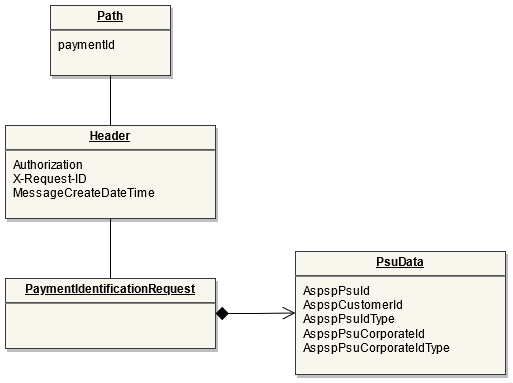 | 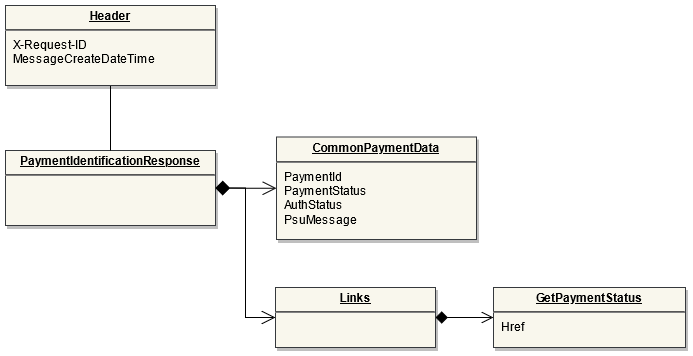 |
POST Cancellation-Authorisations
Endpoint: POST /payments/{paymentId}/cancellation-authorisations
This endpoint is used to start an authorization process explicitly which is required for some ASPSPs. As well it is used in Multi-Authorization scenarios (supported in an extended PIS service) and in Embedded Approach.
Data model
| Request | Response (click to enlarge) |
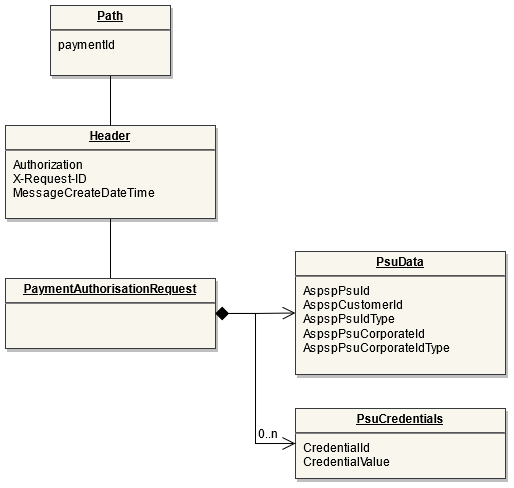 | 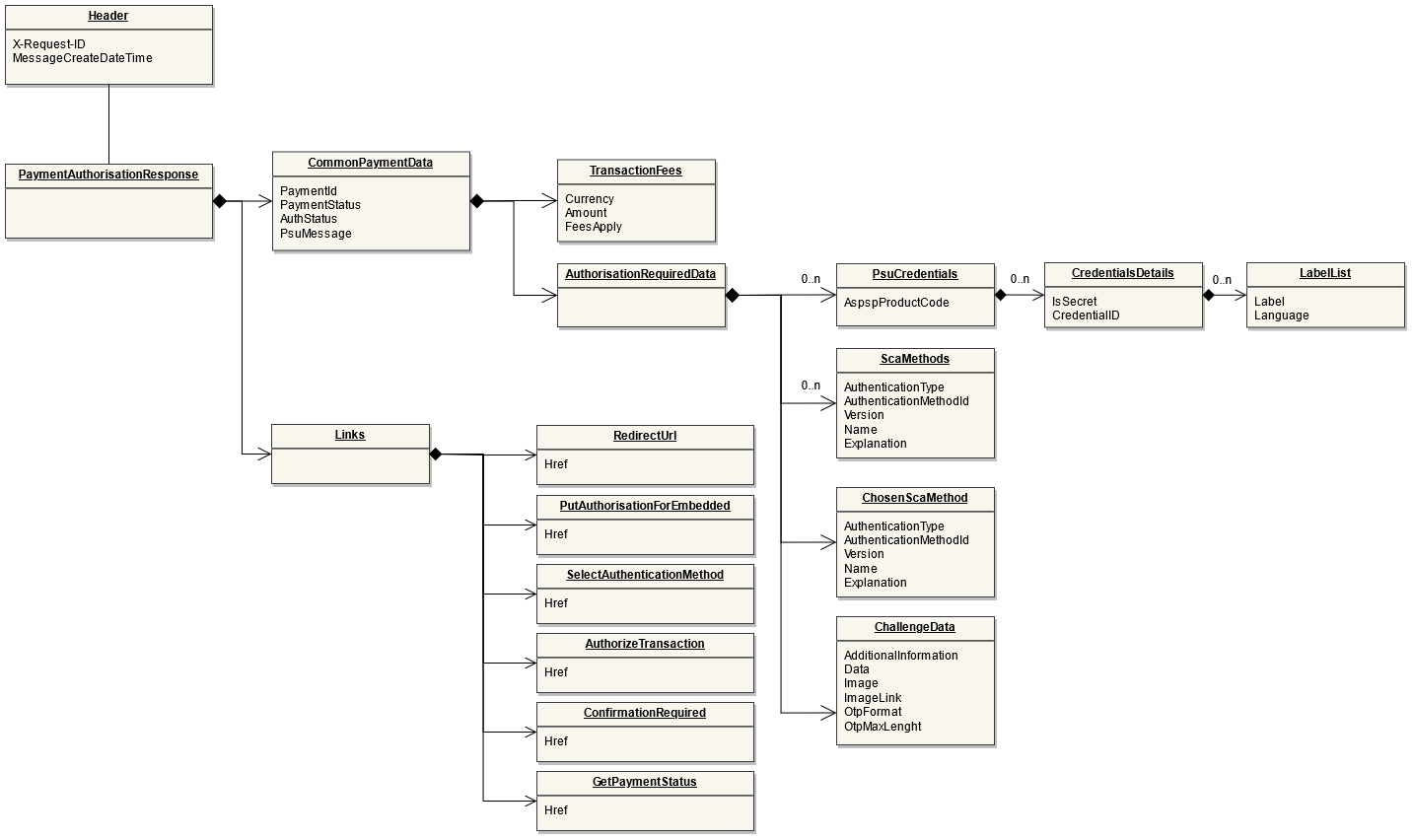 |
PUT Cancellation-Authorisations
Endpoint: PUT /payments/{paymentId}/cancellation-authorisations/{authorisationId}
This endpoint is used in Embedded Approach to provide the required information according to the necessary steps driven by the ASPSP due to the Links section.
Data model
| Request | Response (click to enlarge) |
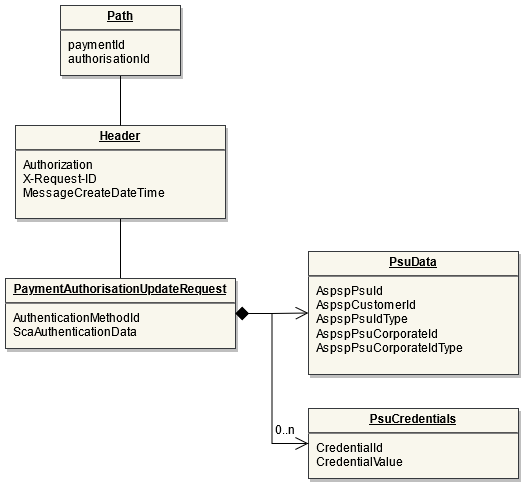 |  |
